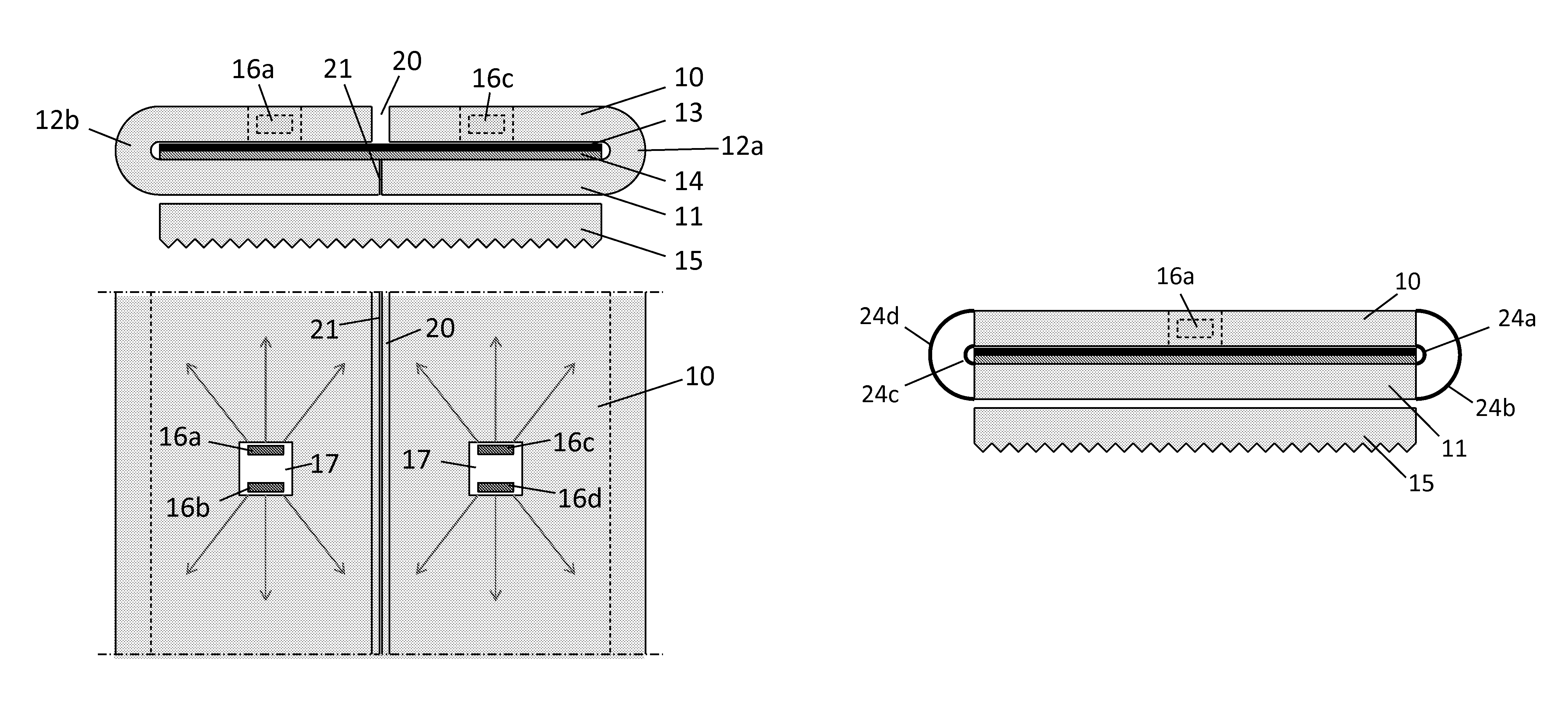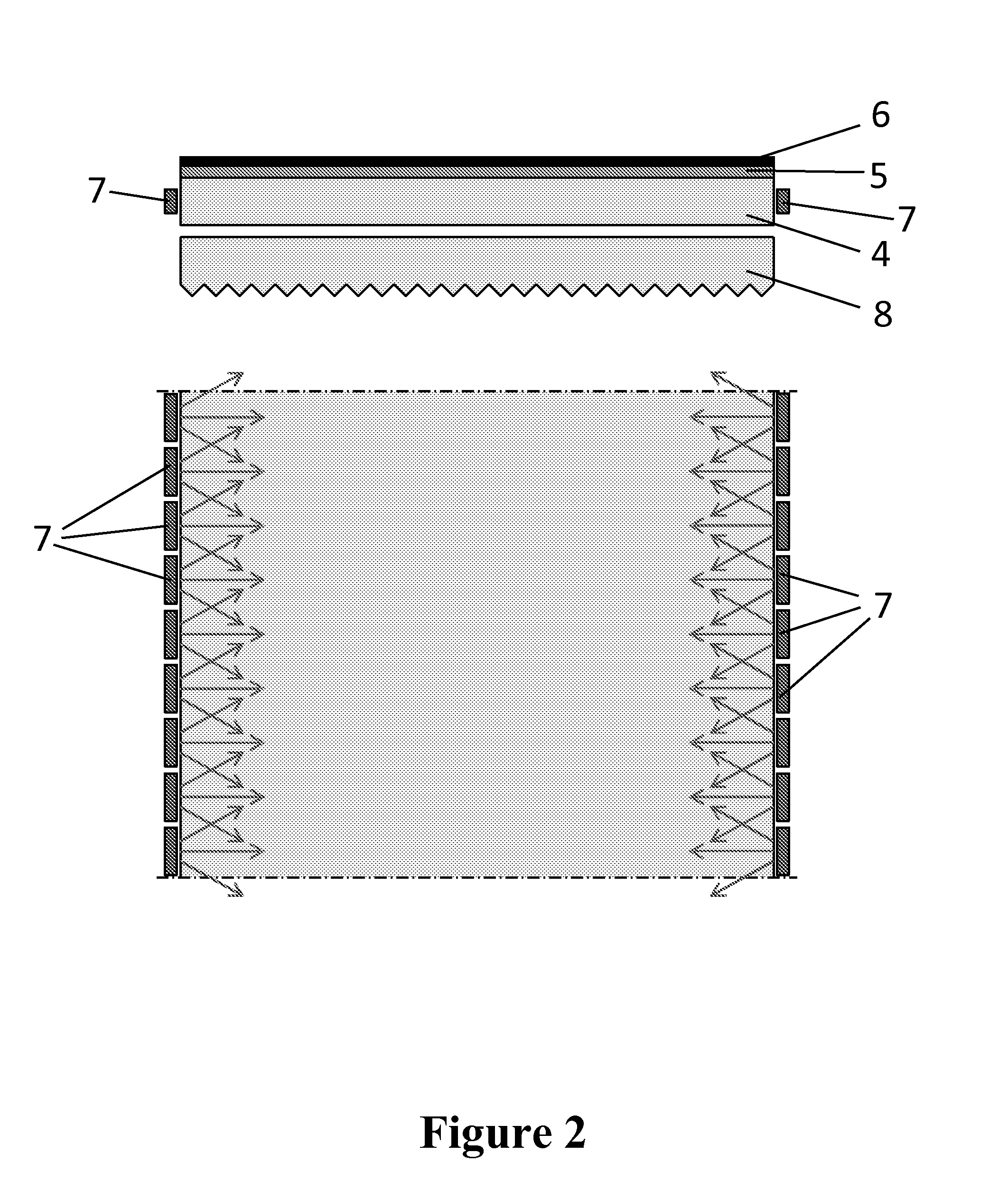Luminaire
a technology of luminaires and light sources, applied in the field of luminaires, can solve the problems of aesthetically disconcerting, unsatisfactory luminaires, and reduced aesthetic appearance of luminaires, and achieve the effects of uniform fixture surface brightness, good color mixing, and great opportunity for color mixing
- Summary
- Abstract
- Description
- Claims
- Application Information
AI Technical Summary
Benefits of technology
Problems solved by technology
Method used
Image
Examples
Embodiment Construction
[0050]It should be understood that the figures are merely schematic and are not drawn to scale. It should also be understood that the same reference numerals are used throughout the figures to indicate the same or similar parts.
[0051]A first embodiment of the invention is shown in FIGS. 3a and 3b. In this a first or top light guide layer 10 is optically coupled to a second or bottom light guide layer 11 via optical couplers 12a and 12b. The optical couplers 12a and 12b are simply bends to allow the passage of light from the top light guide layer 10 to the bottom light guide layer 11, which lie parallel and spaced apart from each other. The top light guide layer 10, the bottom light guide layer 11 and optical couplers 12a and 12b are contiguous and form an integral structure, which may be manufactured for example by extrusion. They may be made from suitable materials such as PMMA or polycarbonate.
[0052]In the space between the top and bottom light guide layers 10, 11 there are an opa...
PUM
 Login to View More
Login to View More Abstract
Description
Claims
Application Information
 Login to View More
Login to View More - R&D
- Intellectual Property
- Life Sciences
- Materials
- Tech Scout
- Unparalleled Data Quality
- Higher Quality Content
- 60% Fewer Hallucinations
Browse by: Latest US Patents, China's latest patents, Technical Efficacy Thesaurus, Application Domain, Technology Topic, Popular Technical Reports.
© 2025 PatSnap. All rights reserved.Legal|Privacy policy|Modern Slavery Act Transparency Statement|Sitemap|About US| Contact US: help@patsnap.com



